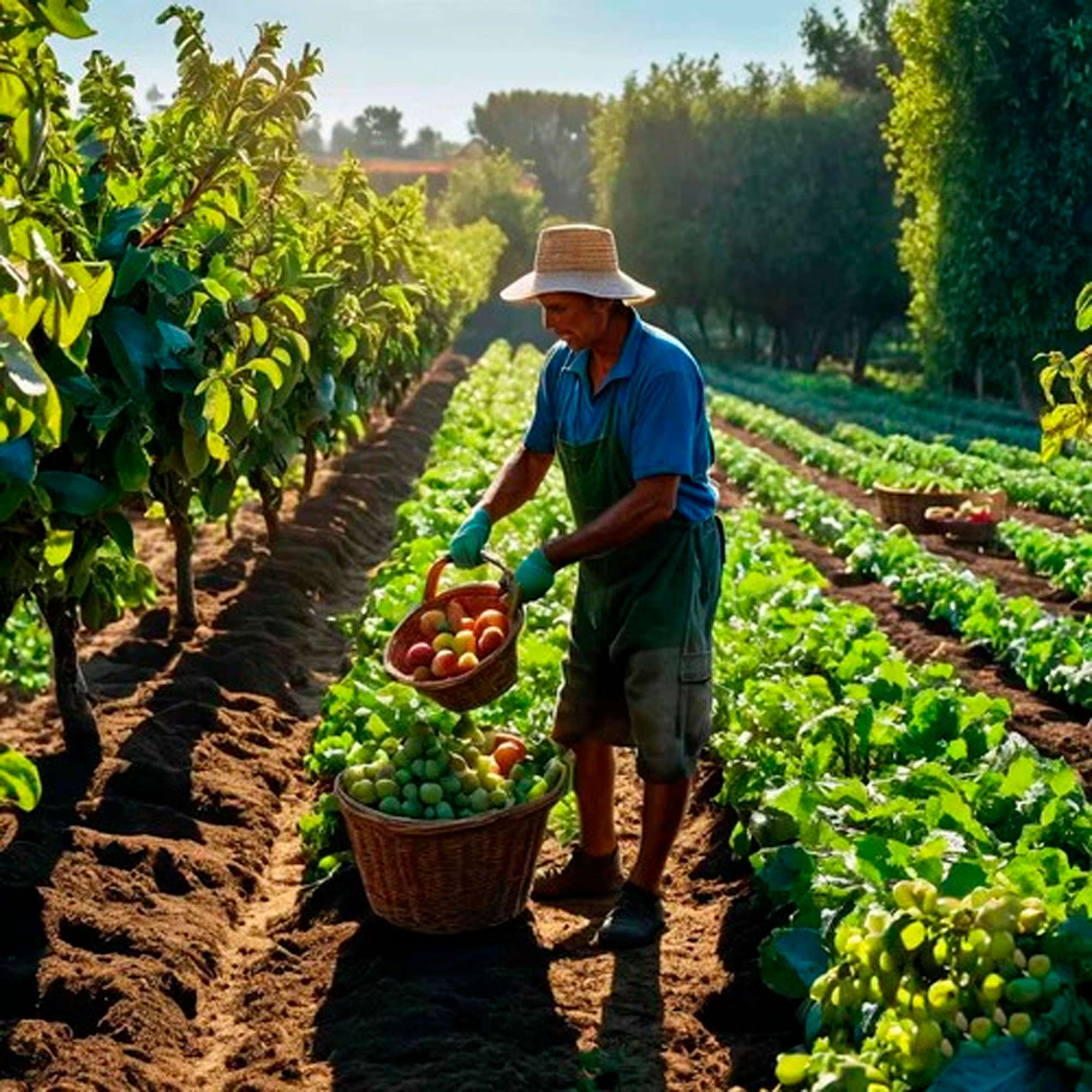Cultivating Curry Leaf Seeds for a Thriving Garden and Farm
Imagine stepping into your garden on a dewy morning, the scent of fresh herbs mingling with the crisp air. Among your thriving plants, there's one that stands out not just for its aromatic leaves but for its incredible versatility—curry leaf. Whether you're a seasoned organic farmer or an enthusiastic gardener, cultivating curry leaf seeds can add a touch of magic to your green space. This guide will help you understand the nuances of growing curry leaves, making your garden a sanctuary of flavor and fragrance.
Growing Happiness in Your Garden with Curry Leaf Seeds
Imagine stepping into your garden on a dewy morning, the scent of fresh herbs mingling with the crisp air. Among your thriving plants, there's one that stands out not just for its aromatic leaves but for its incredible versatility—curry leaf. Whether you're a seasoned organic farmer or an enthusiastic gardener, cultivating curry leaf seeds can add a touch of magic to your green space. This guide will help you understand the nuances of growing curry leaves, making your garden a sanctuary of flavor and fragrance.
The Allure of Curry Leaves
Curry leaves aren't just another plant; they are a cherished ingredient in many culinary traditions. Known for their unique aroma and flavor, these leaves can elevate any dish. But beyond the kitchen, curry leaves offer numerous health benefits, including digestive aid and antioxidant properties.
Understanding Curry Leaf Plants
Before you jump into planting, it's crucial to know a bit about the plant itself. Curry leaf plants, scientifically known as Murraya koenigii, are native to India and Sri Lanka. These hardy shrubs can grow up to 6-15 feet tall, making them suitable for both garden beds and pots. They thrive in tropical and subtropical climates but can be grown indoors in cooler regions.
Why Grow from Seeds?
You might wonder why you should grow curry leaves from seeds when you could buy a young plant. Growing from seeds allows you to nurture the plant from its very beginning, ensuring it adapts well to your garden's conditions. Plus, it's a rewarding experience to watch a plant grow from a tiny seed into a lush shrub.
Selecting the Right Seeds
The first step in your cultivation journey is selecting high-quality curry leaf seeds. Organic seeds are always preferable as they ensure no chemicals have been used in their production, making them safer for you and the environment. Look for seeds from reputable sources like OrganicIndiaSeeds, known for their quality and commitment to organic farming.
Preparing the Soil
Curry leaf plants prefer well-draining soil rich in organic matter. You can prepare the soil by mixing equal parts of garden soil, compost, and sand. This mixture ensures good drainage and provides essential nutrients to the growing plant. If you're planting in a pot, make sure it has adequate drainage holes to prevent waterlogging.
Sowing the Seeds
Sowing curry leaf seeds requires a bit of patience but is relatively straightforward. Start by soaking the seeds in water overnight to soften their hard outer shell. This step enhances germination rates. Next, plant the seeds about half an inch deep in the prepared soil. Keep the soil moist but not waterlogged, and place the pot in a warm, sunny location.
Germination and Early Care
Germination can take anywhere from 2 to 4 weeks, depending on the conditions. During this period, ensure the soil remains consistently moist. Once the seedlings emerge, thin them out to avoid overcrowding. Young curry leaf plants need plenty of sunlight, so place them in a bright spot.
Transplanting to the Garden
When your seedlings are about 3-4 inches tall, they are ready to be transplanted to their permanent spot in the garden. Choose a location that receives full sun and has well-draining soil. Space the plants about 2-3 feet apart to give them room to grow. Dig holes slightly larger than the root balls, place the seedlings in, and cover with soil. Water thoroughly after planting.
Caring for Your Curry Leaf Plant
Curry leaf plants are relatively low-maintenance once established. Regular watering is essential, especially during dry spells. Mulching around the base helps retain moisture and suppresses weeds. Fertilize the plants with compost or a balanced organic fertilizer every 4-6 weeks to promote healthy growth.

Dealing with Pests and Diseases
While curry leaf plants are hardy, they can sometimes attract pests like aphids and spider mites. Regularly inspect your plants and use organic insecticidal soap if necessary. Fungal diseases can also be an issue in humid conditions. Ensure good air circulation around the plants and avoid overhead watering to minimize the risk.
Harvesting Curry Leaves
One of the joys of growing curry leaf plants is harvesting fresh leaves. You can start harvesting when the plant is about a year old and has a good number of mature leaves. Simply pluck the leaves as needed, leaving enough behind to allow the plant to continue growing. Regular harvesting encourages bushier growth.
Culinary Uses of Curry Leaves
Curry leaves are a staple in South Asian cuisine, used in dishes ranging from curries to chutneys. Their unique flavor can transform a simple dish into something extraordinary. You can use fresh leaves directly or dry them for later use. The leaves can also be frozen, retaining their flavor and aroma for months.
Health Benefits
Beyond their culinary uses, curry leaves are packed with health benefits. They are rich in antioxidants, vitamins, and minerals. Consuming curry leaves can aid digestion, boost hair growth, and even help manage diabetes. Including these leaves in your diet is a delicious way to enhance your overall health.
Growing Curry Leaves Indoors
If you live in a colder climate, you can still enjoy the benefits of home-grown curry leaves by cultivating them indoors. Choose a sunny windowsill or use grow lights to provide the necessary light. Indoor plants may require more frequent watering due to the dry indoor air. Ensure the pot has good drainage to prevent root rot.
Joining the Community
Growing curry leaves can be more than just a gardening project; it can connect you with a community of like-minded enthusiasts. Share your experiences, tips, and recipes with fellow gardeners and farmers. Online forums and social media groups are great places to find support and inspiration.
Sustainability and Organic Farming
By choosing to grow your curry leaves organically, you are contributing to a more sustainable future. Organic farming practices enhance soil health, reduce pollution, and promote biodiversity. Plus, the leaves you harvest are free from harmful chemicals, making them safer for you and your family.




Leave a comment
This site is protected by hCaptcha and the hCaptcha Privacy Policy and Terms of Service apply.